
Dioon spinulosum - Plant
(MRP Inclusive of all taxes)
- Shipping ₹79 for entire order
- Dispatch in 7 days
- Country of origin: India

(MRP Inclusive of all taxes)
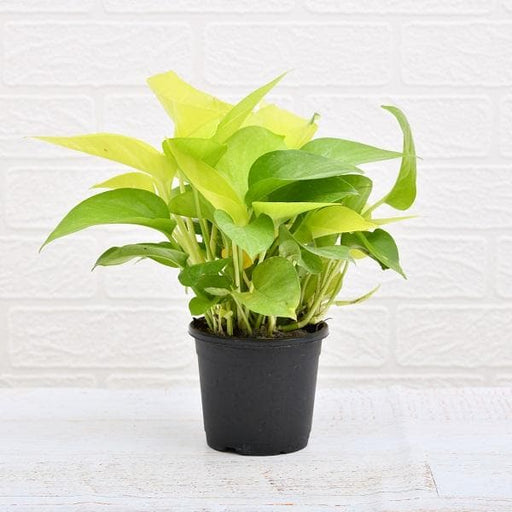 Save 29%
Save 29%
Air Purifier Money Plant with Pot The Air Purifier Money Plant, also known as Pothos or Epipremnum aureum, is a stunning indoor plant that...
View full details
 Save up to 15%
Save up to 15%
Peace Lily, Spathiphyllum - Plant The Peace Lily, scientifically known as Spathiphyllum, is a stunning houseplant celebrated for its elegant white...
View full details
 Save 25%
Save 25%
Jasminum sambac, Mogra, Arabian Jasmine - Plant Jasminum sambac, commonly known as Mogra or Arabian Jasmine, is a fragrant flowering plant...
View full details
 Save 18%
Save 18%
Combo Constituents Includes the Parijat Tree (Night-Flowering Jasmine), a culturally significant plant with fragrant flowers. Description The Pari...
View full details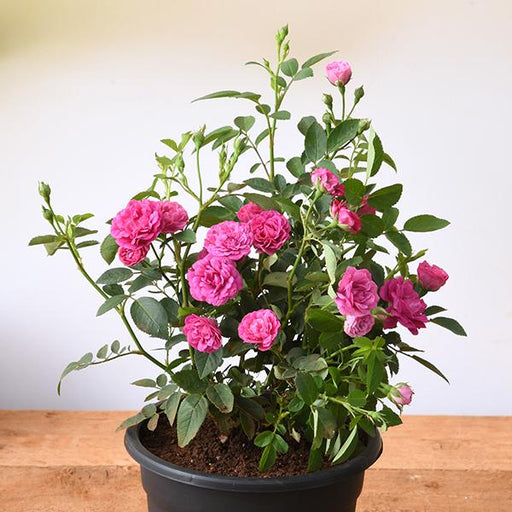
 Save 25%
Save 25%
Miniature Rose, Button Rose (Any Color) - Plant The Miniature Rose, also known as the Button Rose, is a charming and compact flowering plant that ...
View full details Save 25%
Save 25%
Damascus Rose, Scented Rose (Any Color) - Plant The Damascus Rose, also known as Rosa damascena, is a timeless symbol of beauty and romanc...
View full details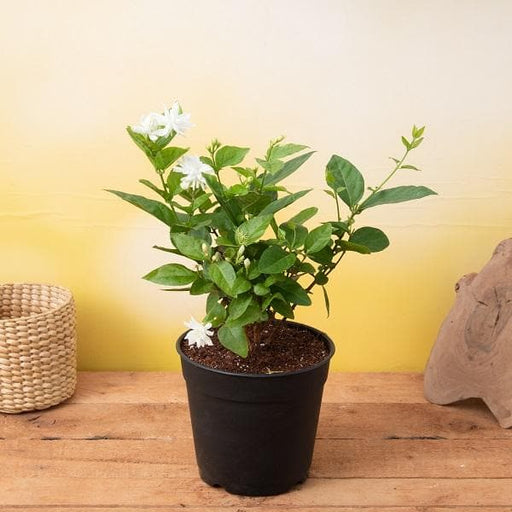
 Save 17%
Save 17%
Beautiful Fragrant Mogra, Arabian Jasmine Plant with Pot The Beautiful Fragrant Mogra, also known as Arabian Jasmine (Jasminum sambac), is...
View full details Save 15%
Save 15%
Pack of Vermicompost and Neem Cake for House Plants Transform your indoor garden with our premium Pack of Vermicompost and Neem Cake, spec...
View full details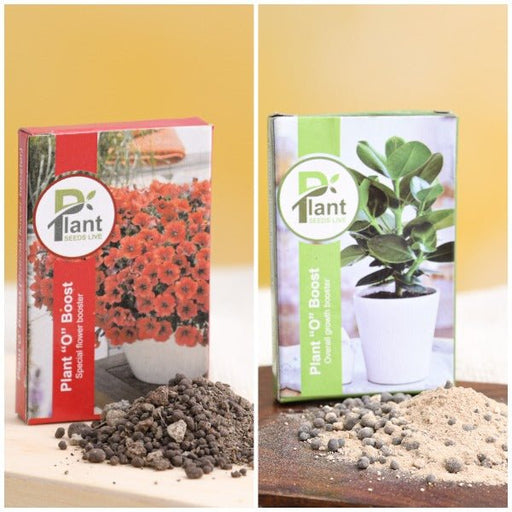
Pack of Plant Growth and Flower Boosters Unlock the full potential of your garden with our Pack of Plant Growth and Flower Boosters! This ...
View full details Save 38%
Save 38%
Combo of Jeevamrut and Neem Raksha for Easy Growth and Protection of Houseplants Transform your indoor garden with our exclusive combo of ...
View full details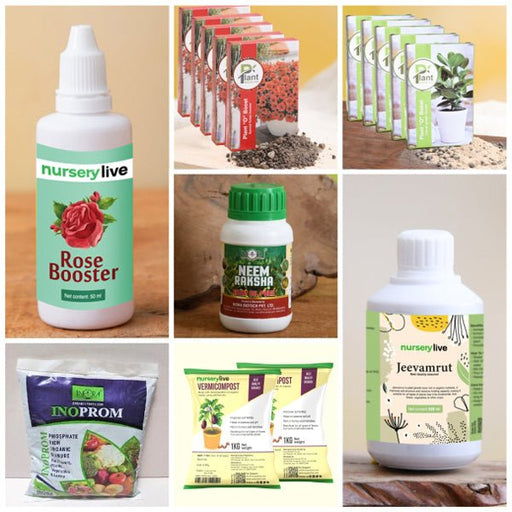 Save 22%
Save 22%
Plant Nutrients Kit (Pack of 16) for a Healthy Garden Transform your garden into a lush paradise with our Plant Nutrients Kit, featuring 1...
View full details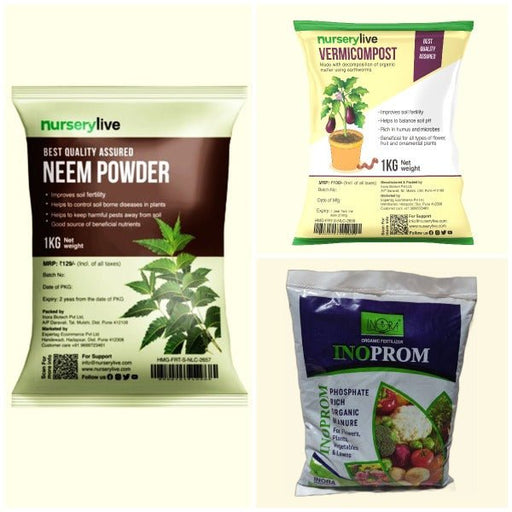 Save 16%
Save 16%
Combo of Top Plant Fertilizers Elevate your gardening game with our exclusive Combo of Top Plant Fertilizers, featuring two bags of premiu...
View full details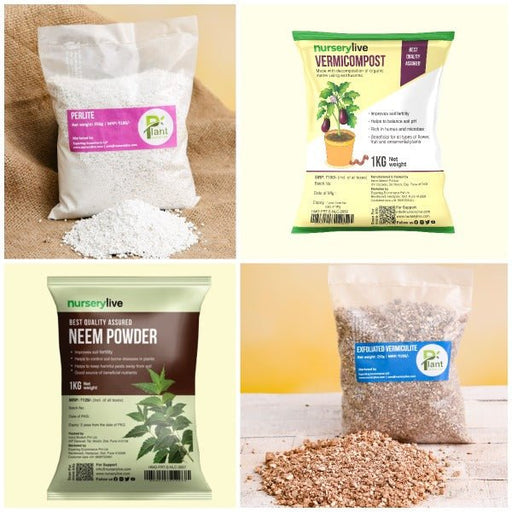 Save 24%
Save 24%
Pack of 4 Additives to Make Soil Healthy and Nutrient Rich Transform your garden into a thriving ecosystem with our Pack of 4 Additives de...
View full details Save 30%
Save 30%
Transform your gardening experience with our premium Combo of Perlite and Vermiculite. This unique blend is designed to enhance soil aeration and ...
View full details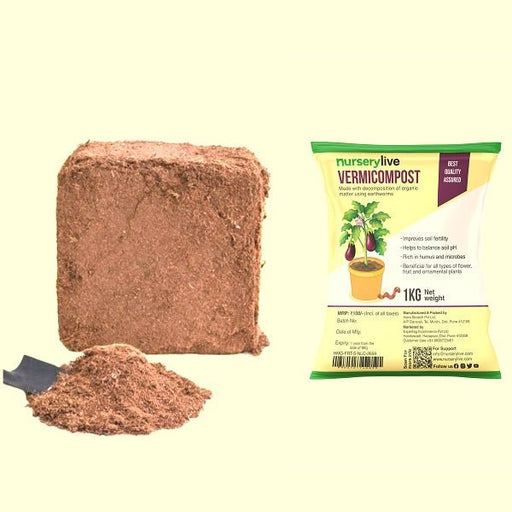 Save 27%
Save 27%
Combo of 2 Vermicompost and Cocopeat - Enrich Your Soil Naturally! Transform your garden into a thriving ecosystem with our Combo of 2 Ver...
View full details
 Save 35%
Save 35%
Best 6 Plants for Perfect Indoor Garden Transform your living space into a lush oasis with our curated collection of the Best 6 Plants for a...
View full details
 Save up to 50%
Save up to 50%
Mini Succulent Garden Pack Transform your space with our Mini Succulent Garden Pack, featuring a delightful collection of 4 any variety beautiful s...
View full details
 Save 30%
Save 30%
5 Best Fragrant Plants Transform your garden or indoor space into a fragrant paradise with our curated selection of the 5 Best Fragrant Plants. Th...
View full details
 Save 24%
Save 24%
Set of 2 Bonsai Looking Grafted Adeniums Transform your indoor or outdoor space with our exquisite Set of 2 Bonsai Looking Grafted Adenium...
View full details Save 45%
Save 45%
Top 4 Die Hard Succulents Pack Transform your indoor or outdoor space with our Top 4 Die Hard Succulents Pack, featuring a curated selecti...
View full details
 Save 30%
Save 30%
5 Best Indoor Plants Pack Transform your living space into a lush oasis with our '5 Best Indoor Plants Pack.' This carefully curated collection fe...
View full details
 Save 25%
Save 25%
Set of 4 Evergreen Air Purifier Plant Pack Transform your indoor space into a lush, green oasis with our Set of 4 Evergreen Air Purifier Pla...
View full details| SrNo | Item Name |
|---|---|
| 1 | Dioon spinulosum - Plant |
Dioon spinulosum, commonly known as the Mexican cycad, is a stunning plant native to the tropical regions of Mexico. This ancient species, belonging to the Cycadaceae family, boasts a unique appearance with its spiky, blue-green leaves that can grow up to 3 feet long. As a slow-growing plant, it can live for over a century, making it a remarkable addition to any garden or landscape.
What makes Dioon spinulosum special is its resilience and adaptability. This cycad thrives in various soil types and can tolerate drought conditions, making it an excellent choice for xeriscaping. Its striking foliage and architectural form add a touch of elegance to any setting, whether in a garden, patio, or indoor space.
One of the most notable features of Dioon spinulosum is its reproductive structure. This cycad produces large cones, with males and females forming distinct shapes. The male cones are elongated and cylindrical, while the female cones are larger and more rounded, showcasing the plant's unique sexual dimorphism.
If you think caring for a Dioon spinulosum is like raising a cactus in a snowstorm, think again! This plant thrives on neglect, but it wouldn’t mind a little TLC. Keep it in well-draining soil, give it bright light, and water it sparingly. Remember, it’s not a diva; it just doesn’t want to drown.
Patience is a virtue, especially when waiting for your Dioon spinulosum to strut its stuff. This slowpoke can take years to reach its full glory, but hey, good things come to those who wait! Just think of it as a long-term investment in your garden’s aesthetic appeal.
Want to multiply your Dioon spinulosum like rabbits? Well, it’s not that easy! Propagation is a delicate dance of seeds and patience. You’ll need to channel your inner horticulturalist and provide the right conditions. But once you succeed, you’ll feel like a plant parent extraordinaire!
This plant is a bit of a soil snob. It prefers sandy, well-draining soil that mimics its native habitat. Think of it as a beach vacation for your plant—no one wants to be stuck in muddy waters!
Sunlight is the secret sauce for a happy Dioon spinulosum. It loves bright, indirect light, but too much direct sun can lead to crispy leaves. It’s like a sunbather who forgot the sunscreen—don’t let that happen to your plant!
When it comes to feeding your Dioon spinulosum, less is more. A light application of a balanced fertilizer during the growing season will do the trick. Think of it as a little pick-me-up rather than a full-course meal.
Beware of the pesky intruders! Dioon spinulosum can attract mealybugs and scale insects, but don’t panic. A little neem oil or insecticidal soap can send those unwanted guests packing. It’s like calling in the bouncers for your plant party!
If you’re looking for a long-term commitment, Dioon spinulosum is your plant soulmate. With proper care, it can live for decades, making it a true testament to your gardening prowess. It’s like the tortoise of the plant world—slow and steady wins the race!
This plant isn’t just a pretty face; it has a variety of uses! From landscaping to indoor decor, Dioon spinulosum can elevate any space. It’s like the Swiss Army knife of plants—versatile and always ready to impress.
Good news for pet owners! Dioon spinulosum is non-toxic to cats and dogs. So, you can let your furry friends roam free without worrying about them nibbling on your prized plant. It’s a win-win for plant lovers and pet parents alike!
This ancient plant has been around since the time of the dinosaurs. Talk about a plant with a pedigree! Its rich history adds a layer of intrigue to your garden, making it a conversation starter at your next dinner party.
While Dioon spinulosum is a star in its own right, there are other varieties that can steal the spotlight. From different leaf shapes to sizes, exploring these variations can add a unique flair to your collection. It’s like having a family of quirky relatives—each one special in its own way!
Dioon spinulosum is a charming cycad native to Mexico, often called the "Zamia." With its spiky leaves and stout trunk, it’s like the punk rock star of the plant world, bringing a touch of the prehistoric to your garden. Just don’t expect it to play guitar!
Caring for Dioon spinulosum is like nurturing a diva. It loves bright, indirect light and well-draining soil. Water it when the top inch of soil is dry, but don’t drown it! Fertilize sparingly during the growing season, and it’ll reward you with its stunning foliage.
Absolutely! Dioon spinulosum can be a fabulous indoor companion, provided it gets enough light. Place it near a window where it can soak up some rays, but avoid direct sunlight that could scorch its leaves. Just remember, it’s not a fan of cramped spaces—give it room to breathe!
Dioon spinulosum is not in a hurry; it’s more of a slow and steady type. Expect it to grow about 6 to 12 inches per year, depending on conditions. Patience is key, but with time, it’ll become a majestic centerpiece in your plant collection.
Yes, Dioon spinulosum can thrive outdoors in USDA zones 9-11. It loves warm climates and can handle some drought, but don’t let it freeze! If you live in a cooler area, consider bringing it inside during winter. It’s like a plant that enjoys a vacation!
Dioon spinulosum is generally pest-resistant, but it can occasionally attract scale insects or mealybugs. If you spot these uninvited guests, a gentle wipe with soapy water or neem oil will send them packing. Think of it as a plant bouncer keeping the riffraff out!
Fertilizing Dioon spinulosum is like giving it a treat—just don’t overdo it! Use a balanced, slow-release fertilizer during the growing season, about every 4-6 weeks. In winter, let it hibernate without extra nutrients. It’s a plant that appreciates a good diet but doesn’t want to be stuffed!
Good news for pet lovers! Dioon spinulosum is considered non-toxic to cats and dogs. However, while it won’t harm your furry friends, it’s still best to discourage them from munching on it. After all, we wouldn’t want them to develop a taste for the exotic!
Dioon spinulosum thrives in well-draining soil that mimics its natural habitat. A mix of potting soil, sand, and perlite works wonders. Think of it as a luxurious spa treatment for your plant—good drainage keeps it happy and healthy, preventing root rot from crashing the party!
Dioon spinulosum can grow up to 10 feet tall in the wild, but in cultivation, it usually stays a bit smaller. Its impressive crown of leaves can spread out to about 3 feet wide, making it a stunning focal point. Just remember, it’s not a shrub; it’s a statement!
Propagating Dioon spinulosum is a bit tricky, as it primarily reproduces through seeds. If you’re feeling adventurous, collect seeds from mature cones and plant them in well-draining soil. Just be patient—germination can take a while. It’s like waiting for a fine wine to age!
Dioon spinulosum isn’t just a pretty face; it’s also a great air purifier! This cycad helps improve indoor air quality while adding a touch of prehistoric charm to your space. Plus, it’s low-maintenance, making it the perfect plant for those who want beauty without the fuss!